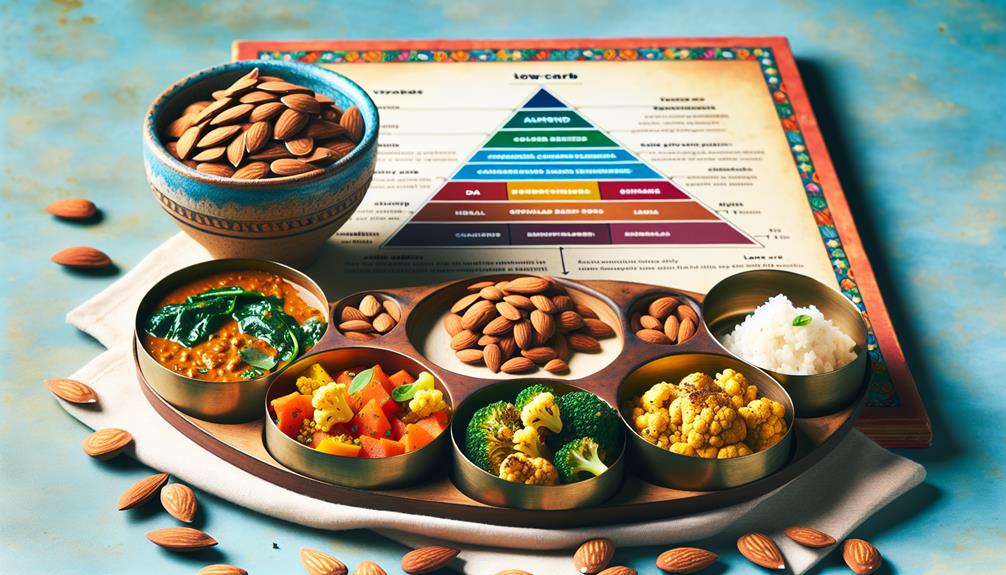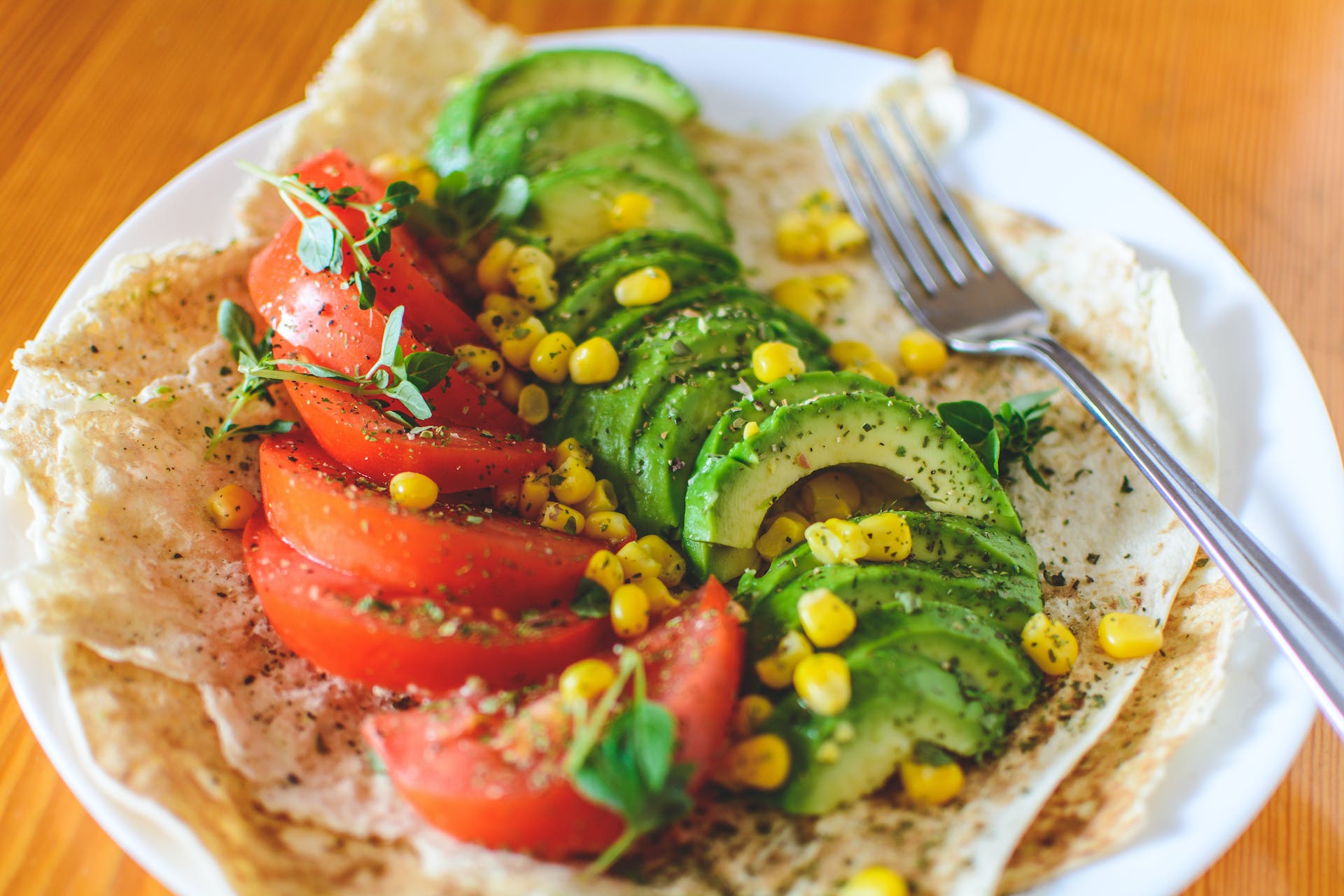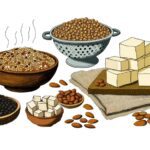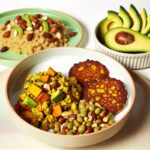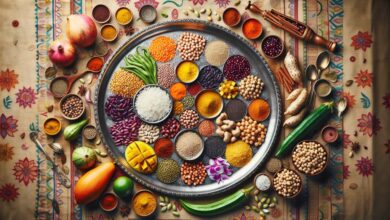Embarking on a low-carb vegan Indian diet presents an intricate tapestry of challenges and rewards, particularly when considering the rich culinary heritage of India – a land where spices meet an abundance of plant-based ingredients. The first essential tip is to gain a comprehensive understanding of low-carb basics within the context of Indian cuisine, which inherently prioritizes a symphony of flavors over the dominance of animal-derived products. Secondly, it is crucial to address the nutritional balance, ensuring that essential nutrients, especially protein, are not compromised in the absence of traditional staples such as lentils and rice that are often high in carbohydrates. The third tip involves strategic meal planning that honors cultural cuisine while respecting the boundaries of a low-carb framework. As we explore how these three pillars can sustain a health-conscious, flavor-rich vegan diet within the Indian culinary realm, it becomes apparent that a thoughtful approach can transcend the mere act of sustenance, elevating the experience to one of cultural reverence and nutritional adequacy. To unveil how one can harmonize the principles of a low-carb regimen with the vibrancy of Indian vegan fare, we must consider the practical applications of these tips in daily life.
Key Takeaways
- Prioritize plant-based, nutrient-dense options over high-carb staples in Indian cuisine.
- Incorporate healthy fats from nuts, seeds, and avocados in a low-carb vegan Indian diet.
- Choose protein sources such as lentils, chickpeas, tofu, chia seeds, and nutritional yeast.
- Focus on colorful, fibrous vegetables, balance meals with plant-based proteins, and select lower-carb grains for meal planning in a low-carb vegan Indian diet.
Understanding Low-Carb Basics
Embracing a low-carb lifestyle within the Indian dietary context means redefining traditional meals to prioritize plant-based, nutrient-dense foods over the usual carb-centric staples. Carbohydrates, functioning as the main source of energy, are sugars, starches, and fibers prevalent in an Indian diet often heavy in grains like wheat, rice, and oats. Moving towards a low-carb Indian foods approach involves a conscious effort to reduce the intake of such high-carb and calorie-dense foods, which can lead to overconsumption and a quick return of hunger.
Incorporating a vegan diet rich in vegetables that contain lower quantities of carbohydrates is a culturally sensitive and health-conscious choice. This shift not only aligns with many traditional Indian diets that are inherently rich in diverse vegetables but also allows for the innovative exploration of flavors. A low-carb diet in this context focuses on whole, unprocessed foods and emphasizes healthy fats from sources such as nuts, seeds, and avocados, which can be both satisfying and nourishing.
As one serves others through culinary means, it is pivotal to offer meals that support their well-being. Providing options low in carbs and calories, yet abundant in taste and nutrition, is a testament to a caring and informed approach to dietary needs.
Essential Nutrient Considerations
Frequently overlooked in a transition to a low-carb vegan lifestyle are the essential nutrients that must be judiciously included to maintain a balanced and culturally respectful Indian diet. Vegan diets can provide all necessary nutrients, but special attention is needed to ensure a diverse intake of protein, vitamins, and minerals. In the context of flavorful and healthy Indian cuisine, it’s possible to enjoy low carb Indian food that’s rich in both taste and nutrition.
- Protein: Combine various plant-based sources, such as lentils, chickpeas, and tofu, to obtain all essential amino acids. Incorporate protein-rich chia seeds and nutritional yeast into meals to boost daily intake.
- Healthy Fats: Utilize heart-healthy coconut oil for cooking and garnish dishes with nuts and seeds to add richness and vital fatty acids.
- Vitamins and Minerals: Emphasize a variety of vegetables, especially leafy greens and cruciferous veggies, and fruits in your diet. Supplement with vitamin B12 to support overall health in a vegan lifestyle.
Low-Carb Vegan Protein Sources
Diversifying one’s plant-based diet with low-carb vegan protein sources is essential for maintaining both traditional Indian flavors and a balanced nutritional profile. Those pursuing a low carb Indian diet, especially when aiming for vegetarian keto or a weight loss diet, must be vigilant about including enough protein. Vegan diets can be rich in protein foods without being highly processed. Nutritional yeast, for instance, is a savory addition that can enhance dishes with its cheese-like flavor while providing a substantial amount of protein.
Here’s a table outlining some key low-carb vegan protein sources and their grams of protein per serving:
| Protein Source | Grams of Protein Per Serving |
|---|---|
| Soybean | 36g per cup (cooked) |
| Almonds | 6g per ounce |
| Tofu | 20g per cup (firm) |
| Seitan | 21g per 3 ounces |
Each of these options offers a unique texture and taste, allowing for creative culinary expression in a healthy and conscientious manner. Seeds like chia and flaxseeds can also be sprinkled on dishes to boost protein intake subtly. Additionally, plant-based protein shakes or powders can serve as convenient supplements to ensure one’s diet remains rich in essential nutrients without resorting to highly processed alternatives.
Planning Your Meals
Crafting a well-rounded low-carb vegan meal plan involves strategically incorporating a variety of vegetables, proteins, and selected grains to maintain a balance of flavors and nutrients. When embarking on vegan diets, especially those modeled after an Indian keto diet, it’s essential to focus on nutrient-rich foods that support a healthy lifestyle while reducing carbs.
- Incorporate a Rainbow of Vegetables: Prioritize colorful, fibrous vegetables to ensure a high intake of dietary fiber, vitamins, and minerals. Think leafy greens, cruciferous veggies, and bright bell peppers for variety and taste.
- Select Protein-Rich Foods: Balance your meals with plant-based proteins such as lentils, legumes, and tofu. Consider using nutritional yeast to add a cheesy flavor without the dairy products.
- Mindful Grain Selection: Choose grains that are lower in carbohydrates, such as quinoa or bulgur, to complement your protein and fat intake without overloading on carbs.
While a low-carb vegan Indian diet can be rich and satisfying within the comfort of your own home, it may present challenges when it comes to social gatherings and dining out. Navigating these social situations requires a blend of preparation and communication. When attending events, be ready to articulate the reasons behind your dietary changes. Your choice to follow a vegan diet, potentially for weight loss, blood sugar control, or ethical reasons, deserves respect and understanding.
Offering to contribute a dish to share not only ensures that you have something to eat that is in line with your low-carb, vegetarian diet, but it also introduces others to the delightful flavors and high fibre content of Indian style cuisine. A balanced diet can be a topic of interest, and your dish could serve as a conversation starter.
Before visiting restaurants, do some research to find establishments that offer menus compatible with your dietary preferences. Suggest these to your friends or family. Moreover, don’t hesitate to contact hosts or event organizers ahead of time to communicate your needs. By doing so, you can help to ensure that the gathering can accommodate your dietary preferences without compromising the social experience for anyone involved.
Frequently Asked Questions
How to Have a Low-Carb Indian Diet?
To achieve a low-carb Indian diet, diversify protein sources with soy products and spirulina supplements. Integrate cauliflower rice, almond flour, and flaxseed meal for fulfilling meals, complemented by coconut oil-enhanced vegetable stir-fries and chia pudding.
How to Avoid Carbohydrates in Indian Food?
To avoid carbohydrates in Indian food, employ carb swapping techniques, understand the glycemic index, and apply portion control tips. Use spices for flavor, explore intermittent fasting, and practice mindful eating for a balanced diet.
How to Eat Low-Carb and Vegan?
Adopting a low-carb vegan diet involves choosing plant-based proteins and vegan fats. Options like cauliflower rice, zucchini noodles, and tofu scramble are nutritious. Incorporate almond flour and coconut cream for diverse, flavorful meals.
Which Indian Food Doesn’t Have Carbohydrates?
Indian cuisine offers options like Tofu Tikka, Vegetable Stir Fry, and Cauliflower Rice, which contain minimal carbohydrates. Spinach Soup, Mushroom Saag, and Zucchini Noodles also provide nutritious, low-carb alternatives. Enjoy Eggplant Bharta with Almond Flour Rotis.
